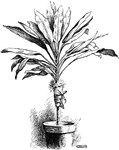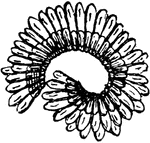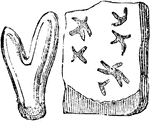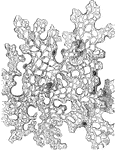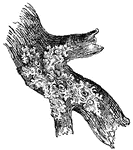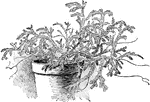Clipart tagged: ‘moss’
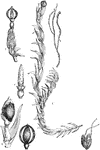
Andrea nivalis
"Andrea nivalis, natural size; 2. the same much magnified; 3. spore-case with the torn calyptra; 4.…

Catharinea
"A moss (Catharinea). The sporophytes of this moss are usually rather more slender than as here represented."…

Flower of a Moss
An illustration of the flower of a moss: ar, archegonium; an, antheridium; p, paraphysis; bl, leaf.

Ground Pine
"1. Spore-case of Lycopodium denticulatum opened; 2. antheridium; 3. spore." -Lindley, 1853
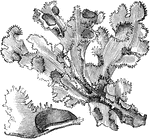
Iceland Moss
"Cetraria islandica: a a. its shields; b. a shield magnified and divided vertically." -Lindley, 1853
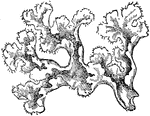
Iceland Moss
celand moss (Cetraria islandica) is a lichen whose erect or ascending foliaceous habit gives it something…

Leaf Lichen
"A greatly magnified view of a perpendicular section of Parmelia aipolia, showing the thecae in the…
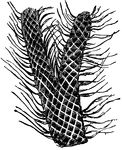
Portion of Lepidodendron
This illustration shows a portion of Lepidodendron. Lepidodendron is the generic name of a large and…

Lichen
"1. Shields of Variolaria amara; 2, a portion of the thallus of the same plant." -Lindley, 1853
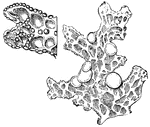
Tree Lungwort
"3. a piece of the thallus of Sticta pulmonacea, with lacunae and soredia; 4. thallus of the same, bearing…
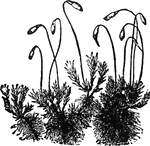
Moss
"Mosses are a class of small flowerless plants, important in the economy of nature, and of great interest…
Moss
"Mosses are a class of small flowerless plants, important in the economy of nature, and of great interest…

Moss
"Mosses are a class of small flowerless plants, important in the economy of nature, and of great interest…
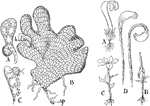
Sphagnum
This illustration shows the germination of the spore Sphagnum: A, early growth of the spore. B, later…
